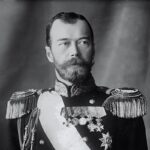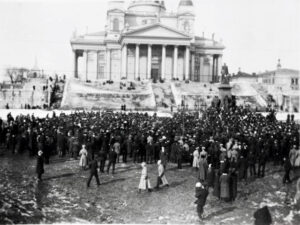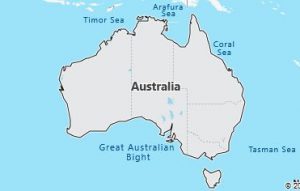republic

 There are different kinds of governments, some good and some bad. The problem these days is that people are confused about which one is the best. On April 13, 1918, the people of Helsinki, Finland were not among the confused. They had lived under a capitalist government, and they had lived under a socialist government, and there was no doubt in their minds that they did not want to live in socialism any longer.
There are different kinds of governments, some good and some bad. The problem these days is that people are confused about which one is the best. On April 13, 1918, the people of Helsinki, Finland were not among the confused. They had lived under a capitalist government, and they had lived under a socialist government, and there was no doubt in their minds that they did not want to live in socialism any longer.
Finland had been under Russian rule since 1809. With the upheaval in Russia in 1917, which included the abdication of Czar Nicholas II in March and the rise to power of Vladimir Lenin and his radical socialist followers, the Bolsheviks, in November, Finland decided to declare its independence in December, 1917. Unfortunately, conflict broke out almost immediately between radical socialists, who were supporters of the Bolsheviks in Russia, and the anti-socialists within the government. In late January 1918, the radical socialist Red Guard launched a rebellion, terrorizing and killing civilians in their attempt to spark a Bolshevik-style revolution. It reminds me of the riots because of the left’s push to socialism in this country. The Whites (as government troops were known) under the command of Baron Karl Gustav Mannerheim found themselves in a bitter struggle to drive the Red Guard (as the Bolsheviks and socialists were known) out of Finland.
On April 3, 1918, German troops who had been sent by Kaiser Wilhelm II, landed in Finland to aid Mannerheim’s White army. Germany had made an agreement to support Finland and its newly declared parliamentary government. German troops, alongside Mannerheim and his force of 16,000 men, fought to take back control of Helsingfors (Helsinki) from the Red Guard, an army of Finnish supporters of the Russian Bolsheviks, on April 13, 1918. That victory was followed by another in Viborg by the end of the month. Another major victory by the Germans and the White Finns took place at Lahti on May 7, 1918. It was that battle that ended the Finnish civil war.
Germany’s close ties with the emerging Finnish government reached a new level in October 1918. Conservative forces in Finland decided to establish monarchal rule in the country, giving the throne to Frederick, a German prince, in the remaining weeks of World War I. However, Kaiser Wilhelm himself had abdicated by the time the Central Powers appealed for an armistice one month later and it seemed certain that the victorious Allies would not look kindly upon a German prince on the Finnish throne, so Frederick abdicated on December 14. The Treaty of Versailles, signed in June 1919, recognized Finland’s hard-won independence. That July, the Finnish parliament adopted a new republican constitution, and liberal Kaarlo J Stahlberg, was elected as the country’s first president.
Today, Finland is considered a republic with representative democracy. The public administration is composed of the highest elected bodies, state administration, local government, and the courts. The highest elected body is 
 made up of the parliament, the president, and the government. The current president of Finland is Sauli Niinistö, who has been president since March 1, 2012. The Parliament of Finland exercises the legislative powers while the executive power is exercised by the cabinet supervised by the premier who heads the government of Finland. The president heads the state and has powers to make a decision concerning some matters such as personal appointments and pardons.
made up of the parliament, the president, and the government. The current president of Finland is Sauli Niinistö, who has been president since March 1, 2012. The Parliament of Finland exercises the legislative powers while the executive power is exercised by the cabinet supervised by the premier who heads the government of Finland. The president heads the state and has powers to make a decision concerning some matters such as personal appointments and pardons.

 As nations grow in size, population, or power, many no longer want to be under the rule of another nation, even one that helped get them to where they are, and even one that has owned their land for years. It is something we, as Americans can’t really fathom, considering that we fought the Revolutionary War to leave British rule.
As nations grow in size, population, or power, many no longer want to be under the rule of another nation, even one that helped get them to where they are, and even one that has owned their land for years. It is something we, as Americans can’t really fathom, considering that we fought the Revolutionary War to leave British rule.
The decision was very different for Australia on November 6, 1999. Treasurer Wayne Swan and senior opposition figure Malcolm Turnbull, who once was Australia’s Republican Movement president, came together in the capital Canberra on the prior Monday to launch a book of essays called ‘Project Republic: Plans and Arguments for a New Australia’. Mr Turnbull, who sits on the front bench for the conservative opposition, described this latest push as “simply, purely patriotic” and called for an ‘interactive plebiscite’ to use cyberspace to better inform Australians of the issues surrounding constitutional change.
As it was, many feared the change, and the work and uncertainty that could accompany it. Still others, like being a part of the monarchy. “Many argue that the sexy celebrity status of William and Kate will sweep all before it and their star quality will revive the monarchy in Australia. I don’t think so,” Turnbull writes. “They will certainly be far more interesting and telegenic than Charles and Camilla – but I am not convinced that will translate into enhanced support for William (or indeed Charles) remaining our head of state.” His opinions aside, the people of Australia voted and decided that they just weren’t ready, and quite possibly they never would be ready to walk away from the British Monarchy. That actually happened in America too, because while 
 the overwhelming number of citizens wanted to go for independence, there were those who did not.
the overwhelming number of citizens wanted to go for independence, there were those who did not.
In Australia, it didn’t appear that the situation would have come to war, as it had in America, but one never really knows what can trigger a war of this type. I guess that in the case of Australia, if they are tired of the Queens rule, they have chosen to wait and see what the future ruling parties might bring. If they don’t like the outcome, they could always choose to break away at a later date.

